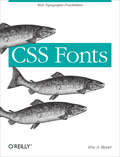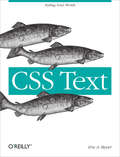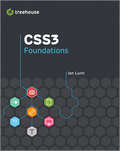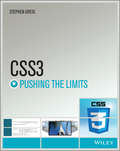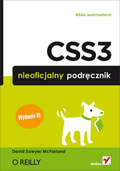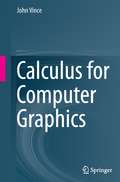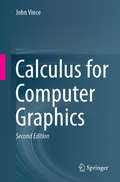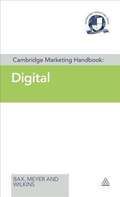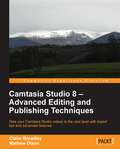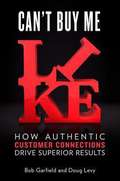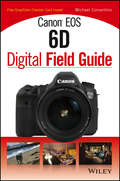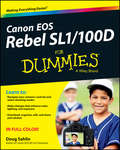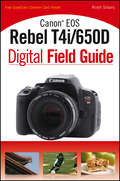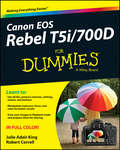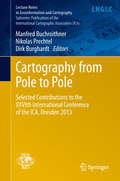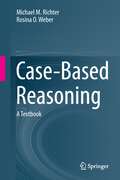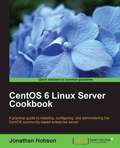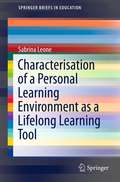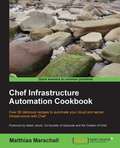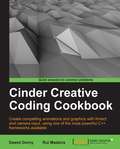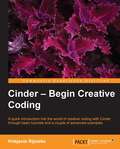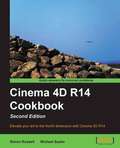- Table View
- List View
CSS Fonts: Web Typography Possibilities
by Eric A. MeyerFrom custom fonts to ad-hoc font families you assemble out of a variety of individual faces, CSS 3 gives you more typographic options than ever before. This concise guide shows you how to use CSS properties to gain a fine-grained and wide-ranging influence over how you display fonts on the Web.Short and sweet, this book is an excerpt from the upcoming fourth edition of CSS: The Definitive Guide. When you purchase either the print or the ebook edition of Fonts, you’ll receive a discount on the entire Definitive Guide once it’s released. Why wait? Learn how to choose and manipulate fonts right away.Specify font families and their generic alternativesUse @font-face to specify customized downloadable fontsSize your fonts with absolute or relative scales, percentages, or length unitsUnderstand the difference between italic and oblique stylesLearn how to specify or suppress a font’s kerning data and other font featuresSynthesize your own variants for fonts that lack bold or italic text
CSS Text: Styling Your Words
by Eric A. MeyerAs a web designer, you probably spend more time working with text than any other element. With this concise guide, you’ll learn CSS3 properties for changing the appearance of text without altering the font face—including horizontal and vertical alignment, text transformation, word and letter spacing, text wrapping, and the direction of text flow.This book is an excerpt from the upcoming fourth edition of CSS: The Definitive Guide. When you purchase either the print or the ebook edition of CSS Text, you’ll receive a discount on the entire Definitive Guide once it’s released. Why wait, when you can start manipulating text on your pages right away?Use properties for indenting and aligning lines of textControl the leading between lines of text beyond the font’s sizeChange the amount of space between words and individual charactersAdd underlines, overlines, strike-throughs, shadows, and other effectsInstruct browsers to prioritize speed, legibility, or geometric precision when rendering textLearn how and when to suppress automatic hyphenationDetermine the direction that text flows, including left-to-right and top-to-bottom
CSS3 Foundations
by Ian LunnMaster innovative and eye-catching website design with the exciting new Treehouse Series of booksTurn plain words and images into stunning websites with CSS3 and this beautiful, full-color guide. Taking web designers beyond the constraints of prebuilt themes and simple site-building tools, this new Treehouse book combines practicality with inspiration to show you how to create fully customized, modern websites that make viewers stop and stay.The exciting new Treehouse Series of books is authored by Treehouse experts and packed with innovative design ideas and practical skill-building. If you're a web developer, web designer, hobbyist, or career-changer, every book in this practical new series should be on your bookshelf.Part of the new Treehouse Series of books, teaching you effective and compelling website development and design, helping you build practical skills Provides career-worthy information from Treehouse industry pros and trainers Explains the basics of cascading style sheets (CSS), such as how to structure with CSS, use CSS syntax, how to manipulate text, and visual formatting Also covers the box model, how to animate page elements, cross-browser compatibility, and moreLeverage pages of dazzling website design ideas and expert instruction with a new Treehouse Series book.
CSS3 Pushing the Limits
by Stephen GreigPush CSS3 and your design skills to the limit--and beyond!Representing an evolutionary leap forward for CSS, CSS3 is chock-full of new capabilities that dramatically expand the boundaries of what a styling language can do. But many of those new features remain undocumented, making it difficult to learn what they are and how to use them to create the sophisticated sites and web apps clients demand and users have grown to expect.Until now.This book introduces you to all of CSS3's new and advanced features, and, with the help of dozens of real-world examples and live demos, it shows how to use those features to design dazzling, fully-responsive sites and web apps. Among other things, you'll learn how to:* Use advanced selectors and an array of powerful new text tools* Create adaptable background images, decorative borders, and complex patterns* Create amazing effects with 2D and 3D transforms, transitions, and keyframe-based animations* Take advantage of new layout tools to solve an array of advanced layout challenges--fast* Vastly simplify responsive site design using media queries and new layout modules* Create abstract and scalable shapes and icons with pseudo-elements * Leverage preprocessors and use CSS like a programming language within a stylesheet context Don't pass up this opportunity to go beyond the basics and learn what CSS3 can really do!
CSS3. Nieoficjalny podr?cznik. Wydanie III
by David Sawyer McFarlandKaskadowe arkusze stylów (ang. Cascading Style Sheets, CSS) odmieni?y ?wiat stron internetowych. Pozwoli?y oddzieli? tre?? strony od jej wygl?du. Od tej chwili ?ycie projektantów sta?o si? zdecydowanie prostsze. Praca nad zmian? wygl?du strony przesta?y przyprawia? o zawrót g?owy, a szybkie przygotowanie kilku wersji na konkretne urz?dzenia sta?o si? realne. Ostatnia wersja CSS3 wprowadza kolejne nowo?ci, które zapewni? optymalne wykorzystanie potencja?u stron WWW.Ta ksi??ka nale?y do cenionej serii „Nieoficjalny podr?cznik”. W trakcie lektury dowiesz si?, jak przygotowa? poprawny arkusz stylów i do??czy? go do strony. Poznasz najlepsze techniki formatowania konkretnych elementów kodu HTML. Ponadto przekonasz si?, ?e mo?na szybko i wygodnie zaprojektowa? profesjonaln? stron? WWW. Znajdziesz tu równie? opis nowo?ci HTML-a w wersji 5 oraz nauczysz si? korzysta? z innych czcionek ni? Arial czy Verdana. Dzi?ki CSS3 wiele operacji, które do tej pory sprawia?y k?opoty lub wymaga?y korzystania z elementów graficznych, uda Ci si? wykona? za pomoc? zaledwie paru linijek kodu. Zaokr?glone rogi, obracanie elementów, gradienty to tylko niektóre z nich. Ksi??ka ta jest obowi?zkow? lektur? dla ka?dego projektanta i webmastera chc?cego by? na bie??co z nowinkami ze ?wiata stron WWW.Poznaj sekrety CSS3!Formatowanie stronWykorzystanie niestandardowych czcionekObracanie elementówAnimacje Najlepszy przewodnik po CSS3 dla webmasterów!
CWNA Guide To Wireless LANs
by Mark CiampaCWNA GUIDE TO WIRELESS LANS, 3rd Edition provides you with the conceptual knowledge and hands-on skills needed to work with wireless technology in a network administration environment as well as pass the Certified Wireless Network Administrator (CWNA) exam. The text covers fundamental topics, such as planning, designing, installing, securing, and configuring wireless LANs. It also details common wireless LAN uses including maintenance, security, and business applications. The third edition is designed around the latest version of the CWNA exam, as well as the new IEEE 802. 11 standard, making CWNA GUIDE TO WIRELESS LANS the practical guide that prepares you for real-world wireless networking.
Calculus for Computer Graphics
by John VinceStudents studying computer animation and computer games have to be familiar with geometry, matrices, vectors, rotation transforms, quaternions, curves and surfaces, and as computer graphics software becomes increasingly sophisticated, calculus is also being used to resolve its associated problems. The author draws upon his experience in teaching mathematics to undergraduates to make calculus appear no more challenging than any other branch of mathematics. He introduces the subject by examining how functions depend upon their independent variables, and then derives the appropriate mathematical underpinning and definitions. This gives rise to a function's derivative and its antiderivative, or integral. Using the idea of limits, the reader is introduced to derivatives and integrals of many common functions. Other chapters address higher-order derivatives, partial derivatives, Jacobians, vector-based functions, single, double and triple integrals, with numerous worked examples, and over a hundred illustrations. Calculus for Computer Graphics complements the author's other books on mathematics for computer graphics, and assumes that the reader is familiar with everyday algebra, trigonometry, vectors and determinants. After studying this book, the reader should understand calculus and its application within the world of computer games and animation.
Calculus for Computer Graphics
by John VinceStudents studying different branches of computer graphics have to be familiar with geometry, matrices, vectors, rotation transforms, quaternions, curves and surfaces and as computer graphics software becomes increasingly sophisticated, calculus is also being used to resolve its associated problems. <P><P> In this 2nd edition, the author extends the scope of the original book to include applications of calculus in the areas of arc-length parameterisation of curves, geometric continuity, tangent and normal vectors, and curvature. The author draws upon his experience in teaching mathematics to undergraduates to make calculus appear no more challenging than any other branch of mathematics. He introduces the subject by examining how functions depend upon their independent variables, and then derives the appropriate mathematical underpinning and definitions. This gives rise to a function’s derivative and its antiderivative, or integral. Using the idea of limits, the reader is introduced to derivatives and integrals of many common functions. Other chapters address higher-order derivatives, partial derivatives, Jacobians, vector-based functions, single, double and triple integrals, with numerous worked examples, and over a hundred and seventy colour illustrations. <P><P> This book complements the author’s other books on mathematics for computer graphics, and assumes that the reader is familiar with everyday algebra, trigonometry, vectors and determinants. After studying this book, the reader should understand calculus and its application within the world of computer graphics, games and animation.
Cambridge Marketing Handbook: Digital
by Karl Meyer Terry Nicklin Neil Wilkins Robert HardyIn today's electronic age no organisation can afford to ignore digital marketing. Understanding what tools are available, how to use them and how to create and implement a co-ordinated digital campaign are essential elements for every marketer's toolbox. And Digital Marketing means more than just establishing a website. There is a complex array of channels and tools including search engine optimisation, mobile and viral marketing, blogs, social media, affiliate schemes, apps, online advertising and web analytics which together have the capability of helping a business achieve previously unseen growth. Cambridge Marketing Handbook: Digital Marketing introduces the key concepts and tools, sets out to how use them effectively and how to create and implement a digital campaign. It also includes a wealth of recommended resources to enable every marketer to keep up to date with the latest developments in this fast moving arena.
Camtasia Studio 8: Advanced Editing and Publishing Techniques
by Mathew Dixon Claire BroadleyA practical guide packed with examples that will show you how to implement the different features of Camtasia Studio 8 and create professional looking projects.If you are familiar with Camtasia Studio and you want to experiment with more advanced techniques, then this is the guide you have been looking for!
Can't Buy Me Like
by Bob GarfieldToday’s brands face an apparent choice between two evils: continue betting on their increasingly ineffective advertising or put blind faith in the supposedly mystical power of social media, where "likes” stand in for transactions and a mass audience is maddeningly elusive. There has to be a better way . . . As Lennon and McCartney wrote a half century ago, money can’t buy you love. But in today’s world, where people have become desensitized-even disillusioned-by ad campaigns and marketing slogans, that maxim needs an update: Money can’t even buy you like. That’s because we’ve entered the "Relationship Era,” where the only path for businesses seeking long-term success is to create authentic customer relationships. Not through hip social media promotions, viral videos or blizzards of micro-targeted online ads. Those tactics, which simply disguise old ways of thinking with new technology, just don’t work in the long run. So what does work in this bewildering new era? Where do "authentic customer relationships” come from? The answers will make some leaders sigh with relief while others rip their hair out: Honesty. Transparency. Shared values. A purpose beyond profit. Sure you still need a high-quality product or service to offer, but that’s not enough. Now that people can easily discover everything that’s ever been said about your brand, you can’t manipulate, seduce, persuade, flatter or entertain them into loyalty. You have to treat them like flesh-and-blood human beings, not abstract consumers or data points on a spreadsheet. It may sound like the woo-woo language of self-help books and inspirational wall posters. But as Garfield and Levy show in this book, it’s the deadly serious reality of business in the 2010s. It’s why General Motors abandoned its $10 million annual budget for Facebook ads, and why some brands have hurt themselves badly on social media by nagging, interrupting, abusing and generally ticking off their customers. The good news is that some companies have already embraced the Relationship Era and are enjoying consistent growth and profits while spending substantially less on marketing than their competitors. The authors show what we can learn from case studies such as . . . Patagonia, a clothing company with a passion for environmentalism, which solidified its customer relationships by urging people NOT to buy one of its jackets. Panera Bread, which doubled per-store sales by focusing on ways to create a welcoming environment while spending just 1 percent of sales on advertising. Secret, the women’s antiperspirant brand, which gained significant share by focusing on its commitment to strong women. Krispy Kreme, which has built a near cult of loyal Facebook and Twitter fans, all but obliterating the need for paid advertising. Blending powerful new research, fascinating examples and practical advice, Garfield and Levy show how any company can thrive in the Relationship Era. .
Canon EOS 6D Digital Field Guide (Digital Field Guide #265)
by Michael CorsentinoThe Canon EOS 6D is Canon's smallest and lightest full-frame DSLR camera to date and boasts an extensive feature set. This full-color, portable guide goes beyond the owner's manual to deliver clear, succinct descriptions of how these features and functions work and explains how they affect the resulting photos. With the expert advice and clear instructions, the Canon EOS 6D Digital Field Guide makes this sophisticated camera accessible to even first-time DSLR users Helps you to consistently achieve professional-level photography using the Canon EOS 6D Walks you through the essential controls, features, and functions using step-by-step instructions and providing full-color images of each menu screen Shows you how to get the exact shots you want, when you want them, and is packed with beautiful color photos Shoot in Live View, choose the best settings for movie-making, and learn how to share your images and video online via the built-in Wi-Fi Includes step-by-step techniques and professional tips on taking exceptional photos with your Canon EOS 6D Canon EOS 6D Digital Field Guide is packed with so much helpful advice for getting the most out of your Canon EOS 6D, you'll find yourself referencing it again and again
Canon EOS Rebel SL1/100D For Dummies
by Doug SahlinGet up to speed on your Canon SL1/100D and enter the world of dSLR photography!Canon's EOS Rebel SL1/100D is for photographers who prefer a smaller, lightweight camera that still offers heavyweight features. This full-color guide explains how to get better photos from an SL1. Written by professional photographer Doug Sahlin, this book explains the camera?s controls and shooting modes. It also shows how to take creative control by moving out of auto mode. You'll also learn how to manage and edit your images, shoot video, use autofocus, and get troubleshooting advice. Features a full-color format that shows you the camera controls and menus, explaining what each is for and how to use them allDemonstrates how to use the new autofocus feature, manage playback options, and shoot videoHelps you graduate to manual mode and learn to control exposure, lighting, focus, and colorCovers downloading, organizing, editing, and sharing photosCanon EOS Rebel SL1/100D For Dummies gives you the knowledge and confidence to make the move to dSLR photography using the Canon EOS Rebel SL1/100D, which is perfect for photographers who've been waiting for a smaller dSLR with big features.
Canon EOS Rebel T4i/650D Digital Field Guide
by SillarsMaster every detail of this exciting new touchscreen dSLRCanon's new introductory-level dSLR camera boasts some revolutionary features that will be new even to Canon veterans. This convenient guide effectively explains every button, menu, mode, and function of the Rebel T4i/650D, and it fits in your camera bag so you can easily refresh your memory during a shoot. With step-by-step descriptions of every action and feature plus color images of every control, this little book will have you taking charge of your camera in no time. Learn to use the touchscreen menus, new silent autofocus feature, and extended ISO range. You'll also get suggestions for improving your shots in specific situations. There's even a free gray and color checker card to help you achieve perfect color and white balance every time.The Canon EOS Rebel T4i/650D offers a touchscreen, silent autofocus mode for better quality video shooting, and a broader ISO range for improved photo quality in low-light conditionsThis handy guide clearly explains every feature, mode, dial, function, and menu, illustrating the instructions with plenty of full-color imagesExplains how and when to use various features and provides great advice on a number of common shooting situationsConvenient 6x9-inch trim size makes it easy to take the book along for reference, and the bonus gray and color checker card inside helps assure you of accurate color Canon EOS Rebel T4i/650D Digital Field Guide is the perfect partner to help you get the most from your exciting new Canon dSLR.
Canon EOS Rebel T5i/700D For Dummies
by Julie Adair King Robert CorrellA comprehensive guide to the Canon EOS Rebel T5i/700D camera written by bestselling For Dummies author Julie Adair KingExpert author and photography instructor Julie Adair King is exactly who you want to explain Canon's hot new Rebel T5i/700D camera for you. Her friendly, step-by-step style - honed to a fine point from helping over 300,000 readers use their cameras - will have you snapping great shots on the new Rebel in no time. Find all the info you need, backed by clear images of camera controls and menus, so you know exactly what she's explaining, when she's explaining it. More than 300 fabulous full-color photos help you see what you and your DSLR Rebel T5i/700D can achieve.Canon's EOS Rebel T5i/700D is an entry-level DSLR camera from Canon and features an 18 megapixel sensor, full 1080 video capability, 5fps shooting, and a 3-inch viewscreenCovers how to shoot in Auto mode, manage playback, organize your images, and get better results from exposure, lighting, focus and colorGives you professional editing tricks and offers plenty of beautiful full-color images so you can see what you can achievePopular bestselling author Julie Adair King author has written more than 15 For Dummies books on Nikon and Canon cameras, and she helps you really get a feel for the cameraCanon EOS Rebel T5i/700D For Dummies...there's so much here to get you on your way to taking great photos!
Cartography from Pole to Pole: Selected Contributions to the XXVIth International Conference of the ICA, Dresden 2013 (Lecture Notes in Geoinformation and Cartography #8)
by Dirk Burghardt Manfred Buchroithner Nikolas PrechtelThis volume comprehends a selection of papers presented during the 26th International Cartographic Conference held in Dresden from the 26th to the 30th of August 2013. It covers many fields of relevant Mapping and GIS research subjects, such as cartographic applications, cartographic tools, generalisation and update Propagation, higher dimensional visualisation and augmented reality, planetary mapping issues, cartography and environmental modelling, user generated content and spatial data infrastructure, use and usability as well as cartography and GIS in education.
Case-Based Reasoning: A Textbook (Lecture Notes in Computer Science #4626)
by Michael M. Richter Rosina O. WeberThis book presents case-based reasoning in a systematic approach with two goals: to present rigorous and formally valid structures for precise case-based reasoning, and to demonstrate the range of techniques, methods, and tools available for many applications.
Causality, Probability, and Time
by Samantha KleinbergCausality is a key part of many fields and facets of life, from finding the relationship between diet and disease to discovering the reason for a particular stock market crash. Despite centuries of work in philosophy and decades of computational research, automated inference and explanation remains an open problem. In particular, the timing and complexity of relationships has been largely ignored even though this information is critically important for prediction, explanation, and intervention. However, given the growing availability of large observational datasets including those from electronic health records and social networks, it is a practical necessity. This book presents a new approach to inference (finding relationships from a set of data) and explanation (assessing why a particular event occurred), addressing both the timing and complexity of relationships. The practical use of the method developed is illustrated through theoretical and experimental case studies, demonstrating its feasibility and success.
Cell Formation in Industrial Engineering: Theory, Algorithms and Experiments (Springer Optimization and Its Applications #79)
by Panos M. Pardalos Boris Goldengorin Dmitry KrushinskyThis book focuses on a development of optimal, flexible, and efficient models and algorithms for cell formation in group technology. Its main aim is to provide a reliable tool that can be used by managers and engineers to design manufacturing cells based on their own preferences and constraints imposed by a particular manufacturing system. This tool could potentially lower production costs by minimizing other costs in a number of areas, thereby increasing profit in a manufacturing system. In the volume, the cell formation problem is considered in a systematic and formalized way, and several models are proposed, both heuristic and exact. The models are based on general clustering problems, and are flexible enough to allow for various objectives and constraints. The authors also provide results of numerical experiments involving both artificial data from academic papers in the field and real manufacturing data to certify the appropriateness of the models proposed. The book was intended to suit the broadest possible audience, and thus all algorithmic details are given in a detailed description with multiple numerical examples and informal explanations are provided for the theoretical results. In addition to managers and industrial engineers, this book is intended for academic researchers and students. It will also be attractive to many theoreticians, since it addresses many open problems in computer science and bioinformatics.
CentOS 6 Linux Server Cookbook
by Jonathan HobsonPresented in a step by step, easy to read tutorial style, this book presents the reader with real world solutions to every aspect of CentOS 6. "CentOS 6 Linux Server Cookbook" is for those professionals, students and enthusiasts who want a down-to-earth or hands-on approach to installing, configuring and running a Centos 6 server. Where a new user may experience this book as a series of solutions, a more experienced user will find a basis on which you can develop your existing skills. So rest assured, there is something for everyone and regardless of your current level of experience, if you are interested in using CentOS 6, then this is the book that offers the insight you need to move forward and master your server.
Characterisation of a Personal Learning Environment as a Lifelong Learning Tool (SpringerBriefs in Education)
by Sabrina LeoneThis work focuses on the characterization of adult lifelong learners' Personal Learning Environments (PLEs) by implicit and explicit tools of personalization. It aims aims toward creating a system for the development of a learning path for the characterisation of PLE for adult life learners. The synergy of formal and informal learning in the dynamic construction of a lifelong learner's PLE is fully explored, with the recognition that the majority of learning, especially for life long learners, occurs outside traditional learning formats. Specifically, this volume discusses the design, implementation, and validation of the SSW4LL (Social Semantic Web for Lifelong Learners) format, and the the SSW4LL system, built on Moodle 2.0 integrated with an adaptive mechanism (conditional activities) and some tools of Social Semantic Web (Semantic MediaWiki, Diigo and Google+). With thoroughly grounded cases studies, this volume makes the case that these systems are suitable to provide a dynamically personalized learning environment to the lifelong learner. All of these environments are fully discussed and cases made for each as a tool for constructing adult learners' PLEs.
Chef Infrastructure Automation Cookbook
by Matthias MarschallChef Infrastructure Automation Cookbook contains practical recipes on everything you will need to automate your infrastructure using Chef. The book is packed with illustrated code examples to automate your server and cloud infrastructure.The book first shows you the simplest way to achieve a certain task. Then it explains every step in detail, so that you can build your knowledge about how things work. Eventually, the book shows you additional things to consider for each approach. That way, you can learn step-by-step and build profound knowledge on how to go about your configuration management automation.This book is for system engineers and administrators who have a fundamental understanding of information management systems and infrastructure. It helps if you've already played around with Chef; however, the book covers all the important topics you will need to know. If you don't want to dig through a whole book before you can get started, this book is for you, as it features a set of independent recipes you can try out immediately.
Cinder Creative Coding Cookbook
by Rui Madeira Dawid GornyFull of easy-to-follow recipes and images that will teach powerful techniques and algorithms, building from basic projects to challenging applications. This book is for artists, designers, and programmers who have previous knowledge of C++, but not necessarily of Cinder.
Cinder – Begin Creative Coding
by Krisjanis RijnieksPresented in an easy to follow, tutorial-style format, this book will lead you step-by-step through the multi-faceted uses of Cinder."Cinder: Begin Creative Coding" is for people who already have experience in programming. It can serve as a transition from a previous background in Processing, Java in general, JavaScript, openFrameworks, C++ in general or ActionScript to the framework covered in this book, namely Cinder. If you like quick and easy to follow tutorials that will let yousee progress in less than an hour - this book is for you. If you are searching for a book that will explain algorithms for complex 2D and 3D generative animations and use of advanced C++ and / or Open GL features - it is not.
Cinema 4D R14 Cookbook
by Michael Szabo Simon RussellThis book is written in a Cookbook style with short recipes designed to effectively teach tools in the minimum amount of time. Each recipe hits on a topic that can be combined or incorporated with other recipes to give you the building blocks you need to start making great designs with Cinema 4D. Rather than demonstrating how to make a few specific and extensive projects, the recipes create a solid base of knowledge to help the reader understand the tools available to foster their own creativity.This book is for professional artists working in architecture, design, production, or games and wanting to use Cinema 4D to create amazing 3D graphics. It is for anyone who wants to quickly get up to speed with Cinema 4D to create 3D projects that run laps around simple 2D designs.
